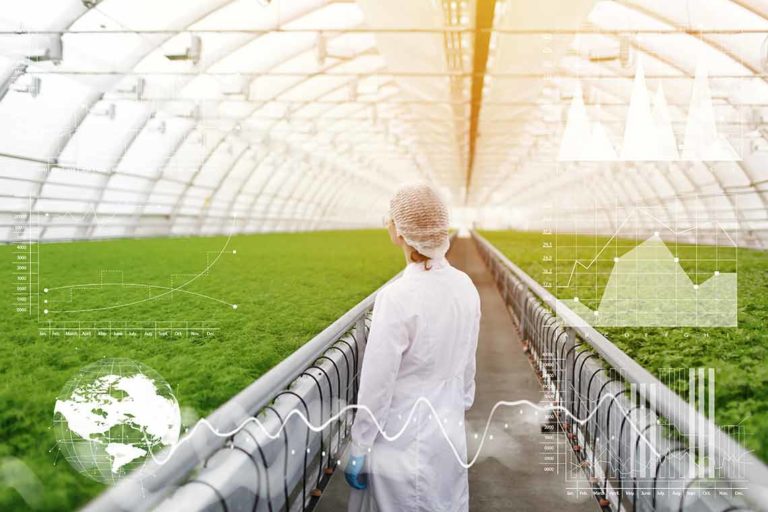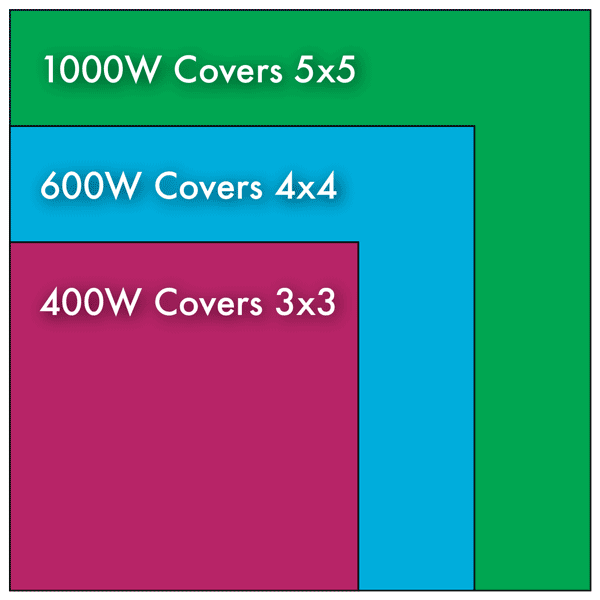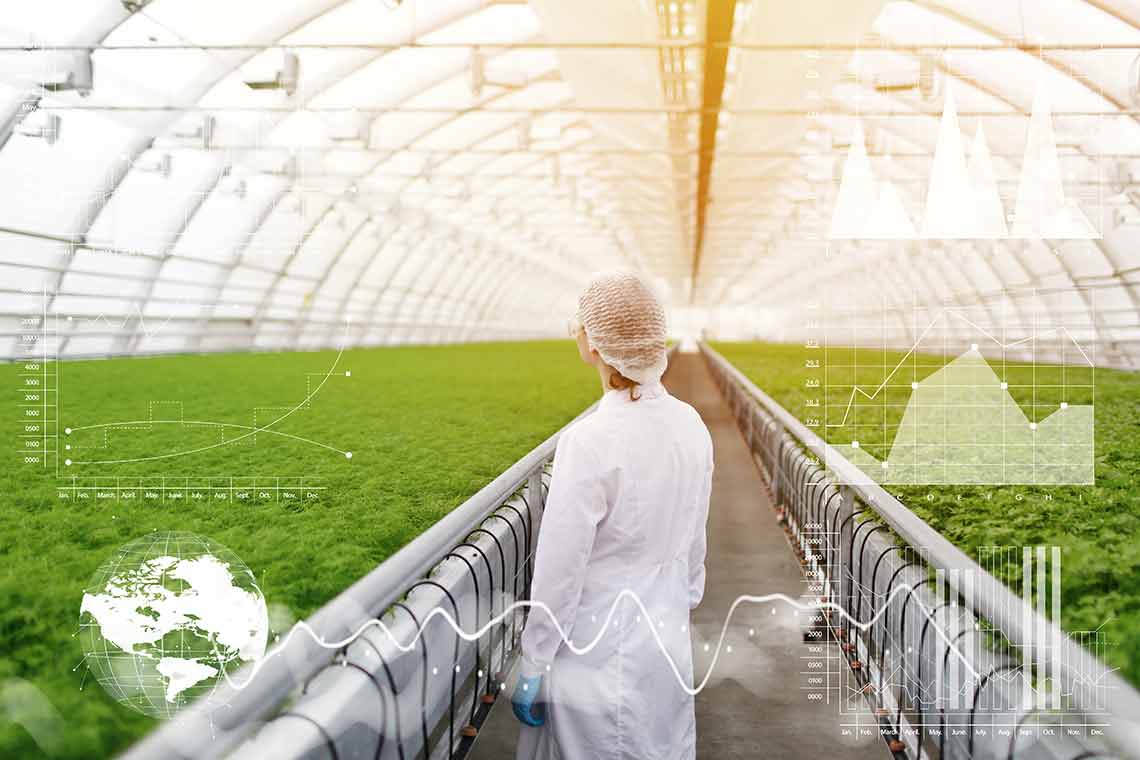Grow room control gives you, the aspiring master grower, probably the single biggest advantage to growing indoors. It produces consistent results from your crops, predictable schedules, and happy customers.
That’s because you control everything, you create the weather, you are not subject to external forces like conventional farmers.
Or at least you should!
Of course, you have to know what you’re doing. There’s a lot of learning. How the different levels of humidity, temp, light, air flow, CO2 and more affect things. And we’ll help you get this all straightened out below.

For your plants to grow their best, you’ll need to be familiar with all of these environmental conditions:
- Relative Humidity – The amount of water vapor in the grow room air
- Atmospheric Temperature – How warm or cool the air in the room is
- PPFD – The intensity of your grow lights reaching the canopy
- Air Circulation – The movement of air throughout the grow room and plants
- CO2 Concentration – The total amount of CO2 gas in your grow room’s air, represented as Parts Per Million
You’ll have different ideal levels depending on the point in the plant’s life cycle. For instance, clones and seedlings need much higher Relative Humidity than fully mature plants ready for harvest.
Grow Room Humidity Control
The ideal humidity is relative to temperature. The higher the temperature the higher the relative humidity your plants are going to need to perform well.
But there are a lot of factors that can affect humidity. Open reservoirs, spilled water, leaking faucets, leaking air conditioners and even the plants themselves!
Healthy plants perform a process called transpiration, in which water evaporates from their stomata (similar to how we sweat). This creates water vapor and raises the overall relative humidity in the room.
If humidity levels creep too high, a slew of issues become increasingly likely. Terrible diseases like black mold, powdery mildew, pythium, pests, and slow growth will quickly take hold of your weakened garden.
Like I mentioned above, the ideal humidity is based on plant cycle and temperature. And that’s best shown in a chart called the Vapor Pressure Deficit chart.
Grow Room Temperature Control
Similar to humidity, temperature is essential for plant metabolism. Too low, and they don’t grow. Too high, and they dry out too quickly.
Many things can affect temperature, the intensity of the heat your lights emit to the strength of your air conditioner to the construction of your grow room, all affect grow room temperatures.
Grow Room Light Intensity
As I mentioned above, PPFD is a measurement of the intensity of the light reaching the canopy. If this is too high, the chlorophyll in the leaves will be destroyed. And that’s very very bad. Of course, if it’s too low for the plant, the plants won’t grow very well, or at all.
Often times, growers want to give their plants as much light as possible because more light is better, right?! Not so fast. Here the law of diminishing returns reduces the effectiveness of additional light after a certain threshold. That number will be different for each plant, but the reason I’m bringing this up is because we’re talking about grow room control here.
Sometimes the added heat from the light is causing more damage to the plant’s ability to grow instead of helping! In these cases dimming the lights, or turning off alternating lights (like DimLux Half Force), can get you great results and a lower energy bill. Seriously. Think about it.
Vapor Pressure Deficit Charts
A good vapor pressure deficit charts (VPD Chart) will tell you ranges of ideal temperature and humidity levels. Often this depends on exactly what stage your crops are in.
Using one of these charts is the simplest way to get a good baseline to work from when trying to optimize your grow environment to your plants.
There are different charts available depending on whether or not leaf temperature is being adjusted for. You can use these charts to adjust either your grow room’s temperature or humidity, or both, to get it into the ideal range.
Check out our article on VPD here, and download a VPD chart you can use.
Grow Room Dehumidifiers
Due to the nature of how plants grow, dehumidification is often a requirement in any grow room or green house. Using powerful fans to exchange the air with outside air can work, but that often creates a conflict with temperature and CO2 control.
Properly sized dehumidifiers are useful for maintaining desired humidity levels in your indoor grow room. They do use a good amount of energy, they are similar to air conditioners.
There are types that have built in controls, so you can set your desired humidity level, and it will automatically turn on and off. While others need to be plugged into an external control system.
Grow Room Temperature Control
Each 1000 watt light (uncooled ballast and bulb) will produce between 3,000 and 4,000 BTU of heat. That means you’ll need an air conditioner capable of cooling your lights.
Similarly to dehumidifiers, there are several options available to control the AC. Make sure you get the best unit you can afford. Don’t go cheap here. An unreliable, or improperly sized AC will cause you to loose money due to poor crops and small yields.
Grow Room Environmental Controllers
The minimum tools you need to take measurements is a digital thermometer and a hygrometer, and make sure you get a reliable model with min and max readings.
The best thing you can get is a grow room controller, like the Maxi Controller with Datalogger, that will not only control your grow room’s temperature and humidity, but it will log the measurements onto a USB thumb drive that you can look at later on your computer.
The Maxi Controller with Datalogger is awesome.
It even has a plant temperature camera, produces (and logs) VPD measurements, and it controls your DimLux lights.
When your grow room or plants get too warm, the Maxi Controller can automatically dim the lights, or turn on a special feature called Half Force. It’s a great safety feature. Any experienced grower will tell you, air conditioners and dehumidifiers can break. And that can be deadly.
Air Circulation
Good air circulation can help minimize micro-climates throughout your grow room, and evenly spread out grow room atmosphere. This will also make mold and mildew issues less likely. And it can strengthen your plants in the process!
It may sound too good to be true, but a few wall mounted oscillating fans, strategically placed, can help tremendously.
Obviously, too much ventilation will damage the plants. Think of a gentle breeze.
Prune Your Plants for Air Flow
Continuing on the topic of grow room air circulation. Overlapping and bunched up leaves can cause what’s known as micro-environments to occur in sections of your crop, beneath the canopy.
Even if you think the room has an ideal environment, if the leaves and branches are blocking air flow, those areas could be soaking wet at 90% humidity.
And the chances of mold and mildew in those sections increases dramatically.
Proper pruning can prevent this problem from occurring by keeping plants from getting too branchy and preventing leaves that overlap substantially.

Grow Room Light Intensity
We all start by planning out the light pattern in a grow room, then, why did I wait so long to talk about it. Remember, we’re talking about the entire environment of your grow room, and most lights today are dimmable.
That dimming feature is really important to make sure your plants grow their best.
Most of you know, smaller plants need less intense light than full grown plants.
When the grow room temperatures get out of hand, the lights are often an easy place to go. Dimming them only a little can have huge effect on the temperature on a hot day.
Light intensity, or PPFD, is an important thing to consider when arranging your pattern of lights in your grow room. Use the chart above to get a rough idea of the sizes we recommend for different spaces. Or just get the DimLux Light Calculator to create a detailed sheet automatically.
Grow Room CO2 Levels
Finally, you need to consider the CO2 levels of your grow space, because healthy plants use a lot of CO2 in the grow room.
Now this isn’t as effective if you’re constantly exchanging all the air in your grow room, but it works great if you haven an air conditioner and dehumidifier capable of controlling the grow room environment.
Generally, a level of 1000 to 1200 PPM is good enough, any more and the law of diminishing returns takes over.
Wrapping It All Up
You’ll have your biggest yields by mastering environmental grow room control. Yes, there are a lot of little details that go into executing this effectively, and many of those are particular for each grow room.
You’ll do great if you can keep control temperature, humidity, light intensity, and CO2! Just make sure you get the right equipment for your grow space.
